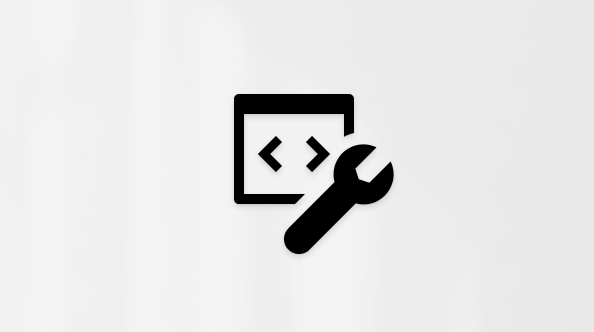August 12, 2025—KB5063877 (OS Build 17763.7678)
Applies To
Release Date:
8/12/2025
Version:
OS Build 17763.7678
Windows Secure Boot certificate expiration
Important: Secure Boot certificates used by most Windows devices are set to expire starting in June 2026. This might affect the ability of certain personal and business devices to boot securely if not updated in time. To avoid disruption, we recommend reviewing the guidance and taking action to update certificates in advance. For details and preparation steps, see Windows Secure Boot certificate expiration and CA updates.
Windows updates do not install Microsoft Store application updates. If you are an enterprise user, see Microsoft Store apps - Configuration Manager. If you are a consumer user, see Get updates for apps and games in Microsoft Store.
Support for Windows 10 has ended on October 14, 2025
After October 14, 2025, Microsoft will no longer provide free software updates from Windows Update, technical assistance, or security fixes for Windows 10. Your PC will still work, but we recommend moving to Windows 11.
Support for Windows Server 2019 will end in January 2029
After January 9, 2029, Microsoft will no longer provide free software updates from Windows Update, technical assistance, or security fixes for Windows Server 2019. We recommend that you upgrade to a later version of Windows Server.
|
Change date |
Change description |
|
September 9, 2025 |
|
|
August 19, 2025 |
|
Summary
This article lists the security fixes and quality improvements included in this security update.
Applies to: Windows 10 Ent LTSC 2019, Windows 10 IoT Ent LTSC 2019, and Windows 10 IoT Core LTSC
This security update includes fixes and improvements that are a part of the following update:
The following is a summary of the issues that this update addresses when you install this update. The bold text within the brackets indicates the item or area of the change we are documenting.
-
[Input and Composition] Fixed: A known issue with the Microsoft Changjie Input Method. Users were unable to select words after a recent update.
Known issues in this update
When you try to reset and recover a device, the process might fail. This issue happens when users perform one or more of the following processes:
-
System >Recovery > Reset my PC
-
System > Recovery >Fix problems using Windows Update
Resolution
These issues are resolved by Windows updates released on and after August 19, 2025 (KB5066187). We recommend you install the latest update for your device as it contains important improvements and issue resolutions, including this one.
Symptoms
A security improvement was included in the August 2025 Windows security update and later updates to enforce the requirement that User Account Control (UAC) prompt for administrator credentials when performing Windows Installer (MSI) repair and related operations. This improvement addressed security vulnerability CVE-2025-50173.
After installing the update, standard users might see a User Account Control (UAC) prompt in several scenarios.
-
Running MSI repair commands (such as msiexec /fu).
-
Opening Autodesk apps, including some versions of AutoCAD, Civil 3D and Inventor CAM, or when installing an MSI file after a user signs into the app for the first time.
-
Installing apps that configure per user.
-
Running Windows Installer during Active Setup.
-
Deploying packages through Manager Configuration Manager (ConfigMgr) that rely on user-specific "advertising" configurations.
-
Enabling Secure Desktop.
If a non-admin user runs an app that initiates an MSI repair operation without displaying UI, it will fail with an error message. For example, installing and running Office Professional Plus 2010 as a standard user will fail with Error 1730 during the configuration process.
Resolution
This issue is resolved by Windows updates released on and after September 9, 2025 (KB5065428). We recommend you install the latest update for your devices as it contains important improvements and issue resolutions, including this one.
Applies to: Windows Server 2019 (All supported editions)
This security update includes fixes and improvements that are a part of the following update:
The following is a summary of the issues that this update addresses when you install this update. The bold text within the brackets indicates the item or area of the change we are documenting.
-
[Cluster Service] Fixed: A known issue affecting Windows Server 2019 where the Cluster Service would repeatedly stop and restart. This behavior caused nodes to fail to rejoin the cluster or enter quarantine, virtual machines to restart multiple times, and frequent Event ID 7031 errors in the event logs. The issue was specific to configurations using BitLocker with Cluster Shared Volumes (CSV).
-
[Input and Composition] Fixed: A known issue with the Microsoft Changjie Input Method. Users were unable to select words after a recent update.
Known issues in this update
Symptoms
A security improvement was included in the August 2025 Windows security update and later updates to enforce the requirement that User Account Control (UAC) prompt for administrator credentials when performing Windows Installer (MSI) repair and related operations. This improvement addressed security vulnerability CVE-2025-50173.
After installing the update, standard users might see a User Account Control (UAC) prompt in several scenarios.
-
Running MSI repair commands (such as msiexec /fu).
-
Opening Autodesk apps, including some versions of AutoCAD, Civil 3D and Inventor CAM, or when installing an MSI file after a user signs into the app for the first time.
-
Installing apps that configure per user.
-
Running Windows Installer during Active Setup.
-
Deploying packages through Manager Configuration Manager (ConfigMgr) that rely on user-specific "advertising" configurations.
-
Enabling Secure Desktop.
If a non-admin user runs an app that initiates an MSI repair operation without displaying UI, it will fail with an error message. For example, installing and running Office Professional Plus 2010 as a standard user will fail with Error 1730 during the configuration process.
Resolution
This issue is resolved by Windows updates released on and after September 9, 2025 (KB5065428). We recommend you install the latest update for your devices as it contains important improvements and issue resolutions, including this one.
If you installed earlier updates, only the new updates contained in this package will be downloaded and installed on your device.
For more information about security vulnerabilities, please refer to the new Security Update Guide website and the August 2025 Security Updates.
For more information about Windows 10, version 1809, see its update history page.
For information about Windows update terminology, see the article about the types of Windows updates and the monthly quality update types.
Windows 10 servicing stack update (KB5062800) - 17763.7557
Microsoft now combines the latest servicing stack update (SSU) for your operating system with the latest cumulative update (LCU). SSUs improve the reliability of the update process to mitigate potential issues while installing updates.
This update makes quality improvements to the servicing stack, which is the component that installs Windows updates. To learn more about SSUs, see Servicing stack updates and Servicing Stack Updates (SSU): Frequently Asked Questions.
How to get this update
Before you install this update
You must install the August 10, 2021 SSU (KB5005112) before installing this cumulative update.
Install this update
To install this update, use one of the following Windows and Microsoft release channels.
|
Available |
Next Step |
|
|
None. This update will be downloaded and installed automatically from Windows Update and Microsoft Update. |
|
Available |
Next Step |
|
|
None. This update will be downloaded and installed automatically from Windows Update for Business in accordance with configured policies. |
|
Available |
Next Step |
|
|
To get the standalone package for this update, go to the Microsoft Update Catalog website. For information about how to download and install updates from the Update Catalog, see How to download updates that include drivers and hotfixes from the Windows Update Catalog. |
|
Available |
Next Step |
|
|
This update will automatically sync with Windows Server Update Services (WSUS) if you configure Products and Classifications as follows: Product: Windows 10 Classification: Security Updates |
If you want to remove the LCU
To remove the LCU after installing the combined SSU and LCU package, use the DISM/Remove-Package command line option with the LCU package name as the argument. You can find the package name by using this command: DISM /online /get-packages.
Running Windows Update Standalone Installer (wusa.exe) with the /uninstall switch on the combined package will not work because the combined package contains the SSU. You cannot remove the SSU from the system after installation.
File information
A list of the files that are included in this update are provided in a CSV (Comma delimited) (*.csv) file. The file can be opened in a text editor such as Notepad or in Microsoft Excel.












